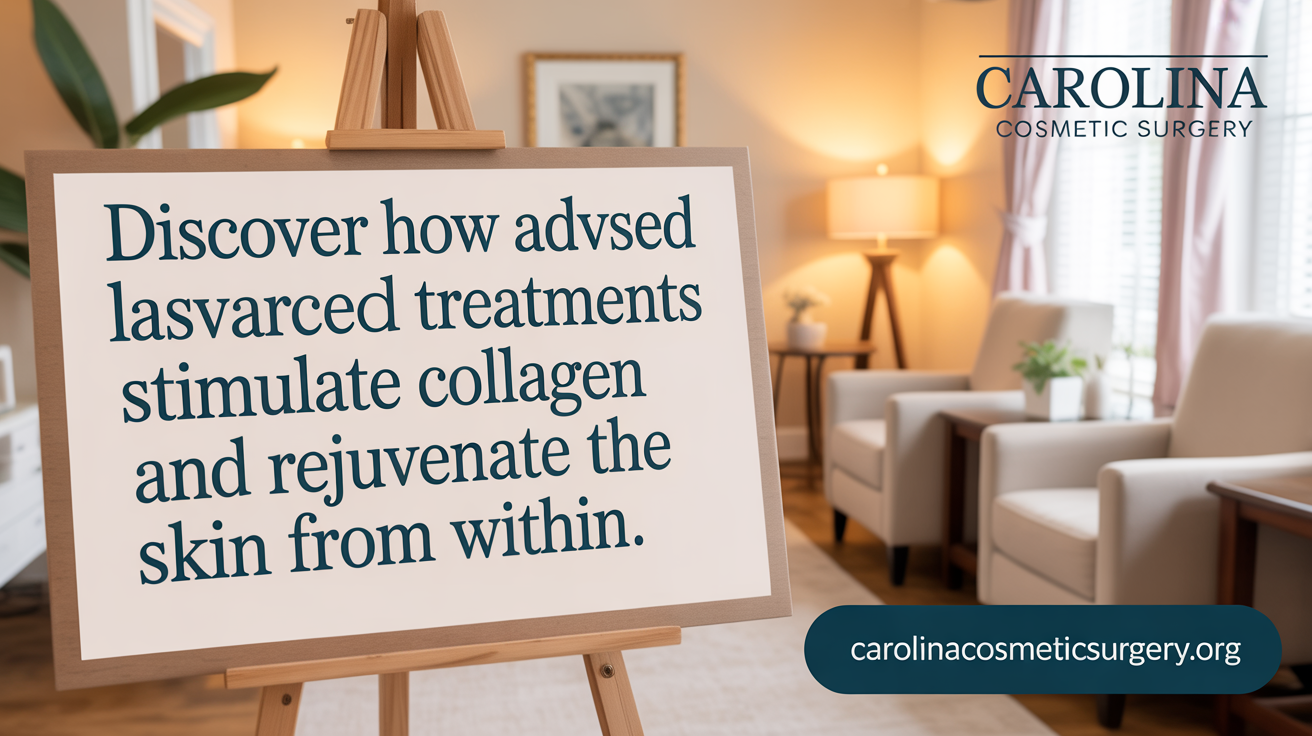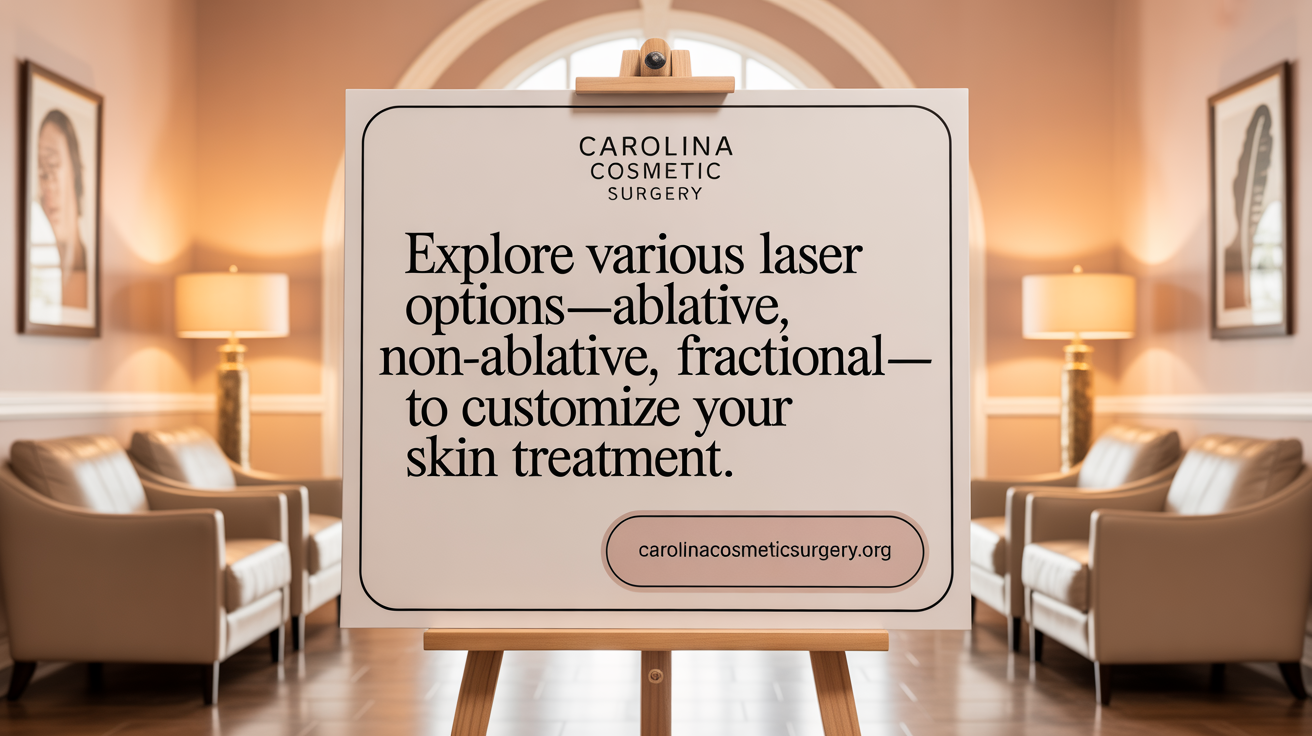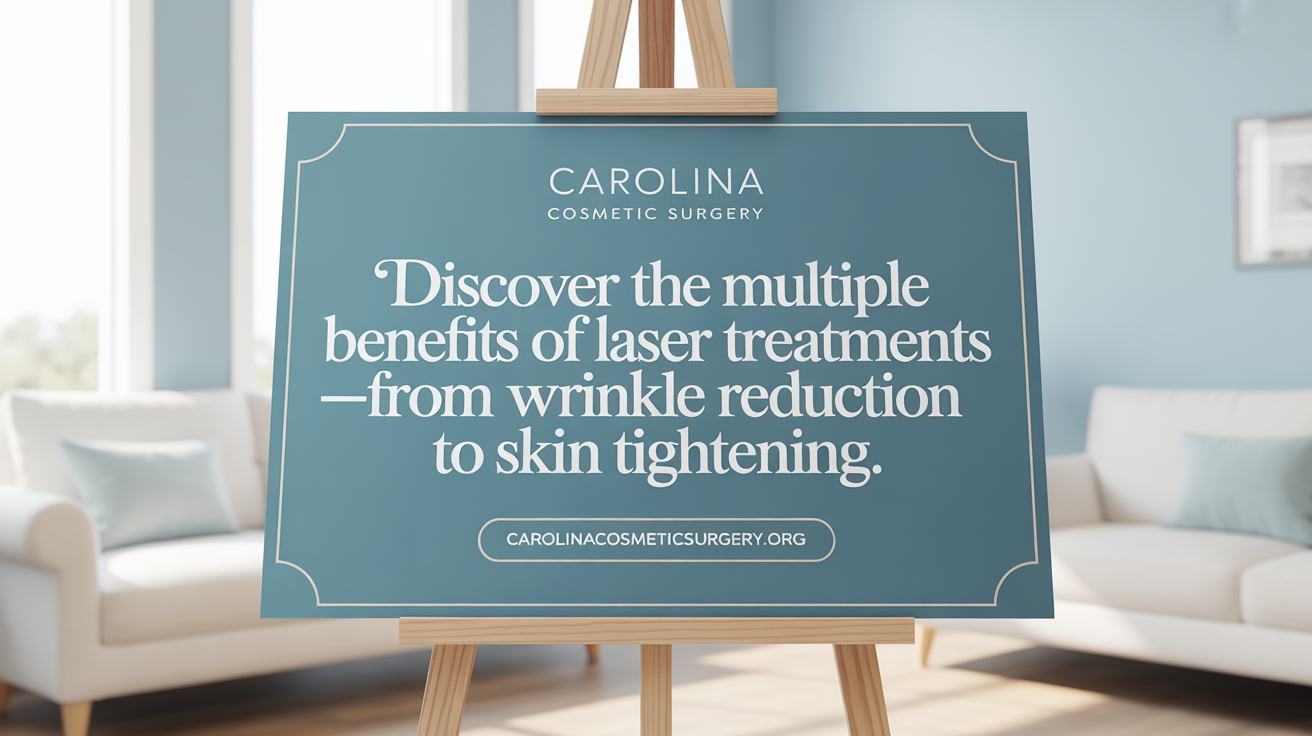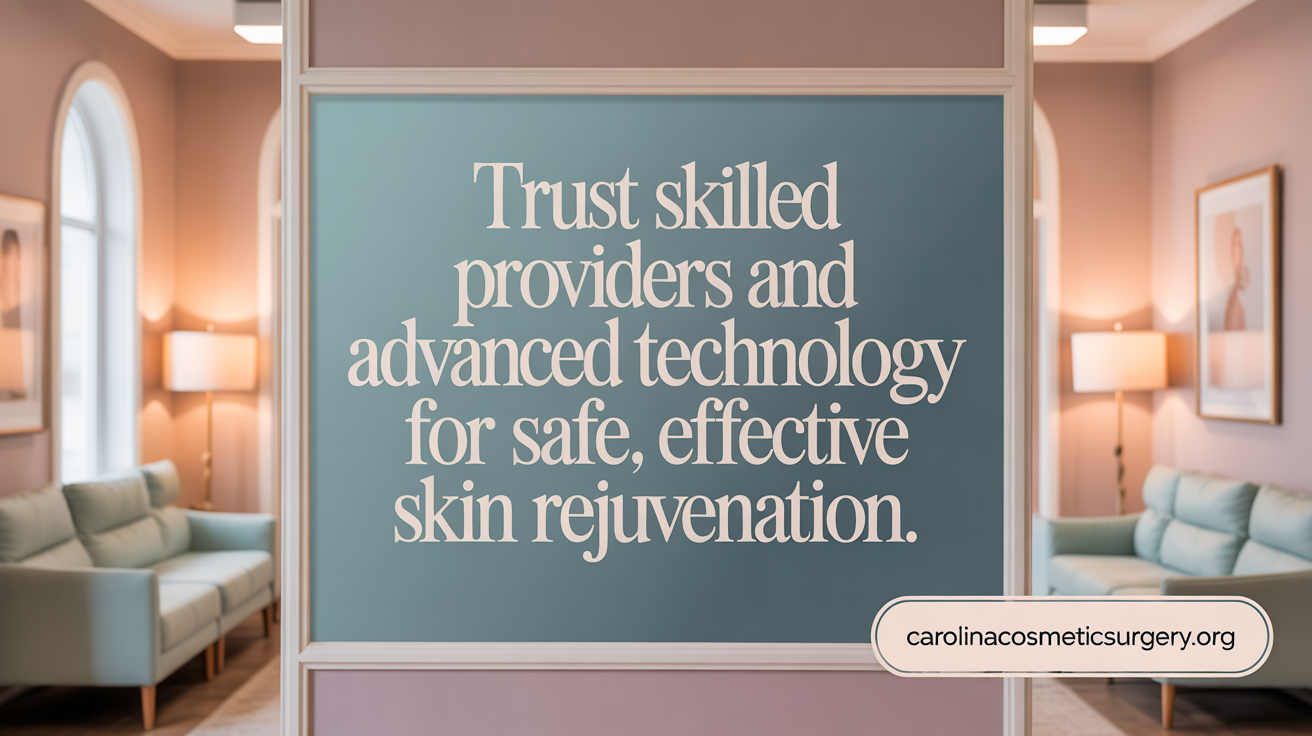Understanding the Power of Laser Technology in Skin Rejuvenation
Laser skin resurfacing has rapidly become a transformative tool in cosmetic dermatology, delivering dramatic improvements in skin texture, tone, and overall appearance. This procedure leverages advanced laser technologies to precisely target skin imperfections and stimulate natural healing processes. In this article, we delve into how laser resurfacing works, its various technologies, benefits, treatment protocols, and why it stands out as an exceptionally effective skin rejuvenation method.
The Mechanism of Laser Skin Resurfacing: How It Works and Why It Works

How does laser skin resurfacing work and what mechanisms make it effective?
Laser skin resurfacing operates through the precise application of light energy to improve skin appearance. The procedure involves directing concentrated, short pulses of laser light at irregular skin to vaporize damaged outer layers, thereby removing wrinkles, scars, age spots, and other blemishes. Different lasers, such as carbon dioxide (CO2) and erbium, are used depending on the skin condition and desired results.
A central aspect of its effectiveness is collagen stimulation. When the laser heats the deeper layers of skin, it triggers a natural healing response, which includes the production of new collagen. Collagen is essential for skin elasticity and firmness, and its increased synthesis helps tighten the skin, diminish fine lines, and improve overall texture.
The laser's energy also causes controlled thermal injury—small zones of heat within the skin—that serve as micro-injuries. These injuries stimulate the body's natural healing response, prompting cells to regenerate and encourage a fresh, healthier skin surface.
Fractional laser technology enhances this process by delivering many narrow columns of laser light into the skin while leaving surrounding tissue unaffected. This approach promotes quicker healing, minimizes side effects, and reduces downtime.
Through this combination of skin layer vaporization, controlled thermal injury, and collagen remodeling, laser skin resurfacing results in smoother, tighter, and more evenly toned skin. It effectively reduces the appearance of wrinkles, scars, pigmentation disorders, and sun damage, delivering long-lasting and natural-looking rejuvenation.
Overall, the synergy of removing damaged skin and stimulating collagen growth explains why laser skin resurfacing is a potent method for facial rejuvenation and skin renewal.
Diverse Laser Technologies: Tailoring Treatments for Optimal Skin Rejuvenation

What are the different types of laser technologies used in skin resurfacing?
Laser skin resurfacing employs various advanced laser technologies, each designed for specific skin concerns and tailored to different skin types. The primary categories are ablative, non-ablative, and fractional lasers.
Ablative lasers, such as the carbon dioxide (CO2) laser and Erbium:YAG (Er:YAG) laser, are powerful tools that remove the outermost skin layers through vaporization. They stimulate deep collagen remodeling, making them highly effective for treating deep wrinkles, scars, and sun damage. CO2 lasers, in particular, have been used for decades and are known for their significant rejuvenating effects. Modern fractional ablative lasers, like fractional CO2, divide the laser energy into microbeams that target specific skin zones, minimizing trauma and reducing recovery time.
Non-ablative lasers, including pulsed-dye lasers, Nd:YAG, and diode lasers, operate by heating the deeper dermis without removing the skin surface. They stimulate collagen production gradually with fewer side effects and little downtime, making them suitable for milder skin aging and pigment issues.
Fractional laser technology can be applied in both ablative and non-ablative modes. It creates tiny zones of controlled injury, promoting faster healing while targeting specific imperfections such as age spots and uneven skin tone. This approach allows patients to benefit from effective skin rejuvenation with reduced recovery periods.
Beyond traditional laser devices, other methods like intense pulsed light (IPL), radiofrequency energy, and LED therapies are also utilized for skin renewal. These technologies use different wavelengths and mechanisms to address vascular concerns, pigmentation, and skin laxity.
In summary, the variety of laser technologies—including ablative, non-ablative, fractional, and other light-based systems—allows customization of skin treatments to optimize results while minimizing downtime and risks. The choice of technology depends on individual skin condition, desired outcomes, and skin type.
Benefits and Advantages: What Sets Laser Skin Resurfacing Apart

What benefits and advantages does laser skin resurfacing offer?
Laser skin resurfacing provides a range of impressive benefits for those seeking skin rejuvenation. One of its primary advantages is its ability to significantly diminish fine lines, wrinkles, acne scars, and pigmentation irregularities. This results in a smoother, brighter, and more youthful-looking complexion.
The procedure stimulates the production of collagen and elastin, two vital proteins responsible for skin firmness and elasticity. As a result, treated skin appears tighter, more resilient, and more radiant over time.
An important feature of laser resurfacing is its customizability. Different types of lasers—such as ablative, non-ablative, and fractional—can be tailored to individual skin types and specific concerns. Whether addressing sun damage, age spots, uneven tone, or mild skin laxity, treatment plans can be customized for optimal outcomes.
Furthermore, laser treatments generally involve minimal downtime. Many patients experience manageable redness and slight swelling that resolve within days to weeks, allowing them to resume daily activities sooner. The results tend to last for several years, especially with proper skincare and sun protection.
Laser skin resurfacing is also highly versatile. It can be combined with other cosmetic procedures like chemical peels or botox for enhanced aesthetic effects. As a non-surgical option, it offers a safe, effective way to achieve significant skin improvements without invasive surgery.
Overall, the procedure's ability to address multiple skin issues, boost collagen production, and offer results that improve over time underscores its popularity among those aiming for a more youthful, smoother, and healthier skin appearance.
Addressing Skin Conditions: How Laser Treatments Enhance Skin Appearance
How do laser treatments improve skin appearance and address different skin conditions?
Laser skin resurfacing works by carefully removing or treating the outer layers of damaged or aged skin while stimulating the body's natural repair process, primarily through the production of new collagen. This dual action results in smoother, firmer, and more elastic skin.
Different laser types are employed to target specific concerns. Ablative lasers, such as CO2 and Erbium lasers, vaporize the top skin layers for significant correction of wrinkles, scars, and sun damage, producing more dramatic and enduring results. Nonablative lasers, like PicoSure or 1540nm systems, heat deeper skin layers without removing surface skin, fostering collagen growth with less downtime and fewer side effects.
Fractional lasers create tiny columns of treated tissue while sparing surrounding areas, speeding up healing and reducing risks. These are effective in reducing wrinkles, scars, pigmentation, and vascular lesions.
Laser treatments can address a broad range of skin issues. For example, they diminish the appearance of fine lines and deep wrinkles, improve skin texture and tone, and reduce hyperpigmentation like age spots or melasma. Vascular conditions such as broken blood vessels or redness can be minimized using specific vascular lasers.
Post-treatment care involves diligent sun protection, moisturizing, and following professional recommendations to enhance healing and prolong results. Regular treatments and good skincare help maintain the improvements, offering a more youthful and even skin appearance over time.
| Laser Type | Main Use Cases | Benefits | Recovery Time |
|---|---|---|---|
| CO2 Laser | Wrinkles, scars, sun damage | Deep removal, significant results | 1-3 weeks |
| Erbium Laser | Fine lines, age spots, superficial scars | Precise ablation, faster healing | Few days to a week |
| Fractional Laser | Wrinkles, scars, pigmentation | Less downtime, targeted treatment | About one week |
| Nonablative Laser | Mild aging, skin laxity | Minimal side effects, less recovery | No downtime or short |
By selecting the appropriate laser technology and tailored treatment plan, dermatologists can effectively improve skin quality and address a variety of skin conditions, helping individuals achieve a healthier, more radiant complexion.
Laser Resurfacing Compared: Standing Out Among Skin Rejuvenation Methods
How does laser skin resurfacing compare with other skin rejuvenation methods?
Laser skin resurfacing is often considered more powerful and effective than other non-invasive skin treatments like chemical peels, microdermabrasion, or topical creams. It works by removing damaged outer skin layers and stimulating the production of new collagen deep within the skin. This results in more significant improvements in skin texture, tone, and wrinkle reduction.
Compared to chemical peels and microdermabrasion, laser resurfacing can treat deeper skin issues, such as prominent wrinkles and sun damage, that less aggressive methods might not adequately address. It offers longer-lasting results because it promotes new collagen growth, which can enhance skin firmness and elasticity over time.
However, laser procedures tend to involve more downtime, typically ranging from a few days to a few weeks based on the aggressiveness of the treatment. There is also a slightly higher risk of side effects, like pigmentation changes or scarring, especially in darker skin tones.
Less invasive options, like topical treatments, usually have minimal downtime but often require multiple treatments to maintain results. Laser resurfacing can often consolidate what would otherwise take many sessions with topical therapies, offering a more dramatic transformation in fewer treatments.
Optimizing Results: Treatment Sessions, Timing, and Age Considerations
How many treatment sessions are typically needed for effective laser skin resurfacing?
Most patients achieve optimal results with a series of 3 to 5 laser resurfacing sessions. Usually, significant improvements are visible after 2 to 4 treatments, which are spaced about 4 to 6 weeks apart. This interval allows the skin sufficient time to heal and recover before the next session. The exact number of treatments depends on individual skin conditions, goals, and the severity of issues such as deep scars or pronounced wrinkles. Mild concerns may require only a single session, while more extensive skin imperfections often benefit from multiple treatments. To sustain and enhance the results, some patients opt for annual or semi-annual maintenance procedures.
What is the best age to consider laser skin resurfacing treatments?
The ideal age for laser skin resurfacing varies based on personal skin health and aesthetic goals. Typically, individuals in their late 20s to early 30s consider laser treatments as preventative measures to address early signs of aging, sun damage, or acne scars with minimal downtime. As people age into their 40s and beyond, laser resurfacing becomes more effective for visibly reducing wrinkles, improving skin texture, and correcting sun-induced damage. Younger patients may choose gentler, preventive procedures, while older adults with more advanced skin aging may require more intensive or combined treatments. A thorough consultation with a board-certified dermatologist or laser specialist is recommended to determine the most appropriate timing and specific approach tailored to individual needs.
Longevity of Results and Post-Treatment Care: Sustaining Your Skin’s Radiance
How long do the results of laser skin resurfacing last?
The benefits achieved from laser skin resurfacing typically last between three and five years. However, this duration can vary depending on individual factors like age, skin type, and overall health.
What factors influence the longevity of laser skin resurfacing results?
Several elements play a role in how long the results are maintained. Proper skincare, consistent sun protection, and a healthy lifestyle significantly extend the effects. Avoiding sun exposure by using broad-spectrum SPF 30 or higher, wearing protective clothing, and seeking shade are essential in preserving the skin's rejuvenated appearance.
Why is sun protection vital after laser resurfacing?
Sun damage can rapidly diminish the improvements made through treatment. UV rays can cause pigmentation issues and accelerate aging signs, undermining the procedure's benefits. Therefore, diligent sun protection is crucial for maintaining results.
How should you care for your skin after treatment?
Post-treatment skincare involves keeping the skin well-moisturized with recommended ointments, avoiding irritating products, and applying antioxidant serums to support healing. Gentle cleansing and regular use of sunscreen also protect the skin during the recovery phase.
Are touch-up treatments beneficial?
To sustain a youthful look, follow-up or touch-up treatments can be scheduled after several years. These additional sessions help address emerging skin concerns and reinforce previous improvements, especially as natural skin aging progresses.
| Aspect | Recommendations | Additional Notes |
|---|---|---|
| Duration of results | 3-5 years, with possible extension beyond this period | Varies based on individual skincare routine |
| Influencing factors | Sun protection, skincare, lifestyle, genetics | Regular professional evaluations recommended |
| Post-treatment care | Moisturize, protect from sun, avoid irritants | Follow professional advice for optimal healing |
| Touch-up treatments | Yes, after several years, depending on skin condition | Maintains and prolongs rejuvenation effects |
Understanding how to prolong the benefits of laser skin resurfacing can help ensure your skin stays radiant and youthful for years to come. Proper aftercare, diligent sun protection, and periodic professional treatments are essential in maximizing and maintaining your investment in skin health.
Safety Profile: Side Effects and Long-Term Considerations

What are the common side effects and potential long-term effects of laser skin resurfacing?
Most patients undergoing laser skin resurfacing experience some temporary side effects. These typically include redness, swelling, itching, dryness, and heightened sensitivity of the skin, which tend to subside within days to a few weeks following the procedure. These reactions are expected and generally considered part of the healing process.
In terms of long-term effects, they are relatively rare when the procedure is performed by experienced professionals using proper techniques. The most common long-lasting change is pigmentary alteration, such as hypopigmentation—where the skin lightens—or hyperpigmentation, which involves darkening of the skin. These pigment changes are often associated with pre-existing skin damage, sun exposure, or improper post-treatment care.
Serious long-term complications like scarring or abnormal skin texture are uncommon. Nonetheless, they can occur, particularly in individuals with darker skin tones or those with specific underlying conditions. In rare cases, persistent redness or uneven pigmentation may remain, but these typically improve over months or respond to further treatment.
Research indicates that when performed correctly, laser resurfacing yields durable improvements in skin texture, tone, and wrinkle appearance, with minimal adverse long-term effects. The key factors in achieving optimal results include careful patient selection, skilled practitioners, and adherence to post-treatment protocols.
Maintaining good sun protection, keeping the skin moisturized, and following medical advice during recovery help reduce the risks of lasting pigment changes and other complications. Overall, laser skin resurfacing is considered safe with a low incidence of long-term side effects when executed by qualified providers.
Expertise and Technology: Keys to Effective and Safe Laser Resurfacing

Why is the skill of the provider crucial for laser skin resurfacing?
Choosing a qualified, board-certified specialist is essential to ensure safety and optimal results. Experienced practitioners understand how to tailor treatments to individual skin types and conditions, reducing risks such as pigmentation issues or scarring. They know how to operate advanced equipment precisely, which amplifies the benefits of the procedure.
What role do advanced laser devices play in treatment outcomes?
Modern laser technology, like fractional CO2 and Erbium YAG lasers, allows for controlled precision in removing damaged skin layers and stimulating collagen production. These devices cause minimal heat damage to surrounding tissue, leading to faster healing and fewer side effects. Such sophisticated tools make it possible to customize treatments for various skin concerns, from wrinkles to scars.
How have technological advancements improved laser resurfacing?
Recent innovations enable fractional laser techniques that treat only tiny zones of skin, promoting quicker recovery and reducing downtime. These advancements also enhance safety, particularly for patients with darker skin tones, by minimizing the risk of pigmentation changes. Additionally, better cooling systems and laser controls improve patient comfort during procedures.
Why is treatment customization important?
Every patient’s skin is unique, requiring personalized plans for best results. Skilled providers evaluate factors such as skin type, condition, and medical history to select appropriate laser settings and treatment depth. Customization helps maximize benefits like skin tightening, scar removal, or wrinkle reduction while minimizing adverse effects.
What should patients consider during consultations?
Patients should discuss their skin concerns, medical conditions, and treatment expectations thoroughly. An expert will assess skin type and any risks posed by their medical history or medications. This consultation ensures the selected laser type and treatment plan align with individual needs, fostering safe and satisfying outcomes.
| Aspect | Importance | Details |
|---|---|---|
| Provider Qualification | Ensures safety and effectiveness | Board certification, experience, specialization |
| Equipment Quality | Enhances precision and outcomes | Use of advanced, state-of-the-art lasers |
| Technological Innovation | Improves safety and recovery | Fractional lasers, cooling systems |
| Treatment Individualization | Optimizes results | Custom settings based on skin type and condition |
| Patient Assessment | Prevents complications | Medical history, skin analysis analogy |
Leveraging highly skilled professionals and cutting-edge laser technology is fundamental in achieving safe, effective, and lasting results from laser skin resurfacing.
The Lasting Impact of Laser Skin Resurfacing on Skin Health and Beauty
Laser skin resurfacing stands out as a powerful, scientifically grounded approach to skin rejuvenation, harnessing the precision of modern laser technologies to restore youthful texture and tone. Its effectiveness hinges on the interplay of controlled skin ablation and stimulated collagen remodeling, which translates into tangible improvements in wrinkles, scars, pigmentation, and overall skin quality. With a variety of laser types tailored to individual needs and a treatment regimen designed for optimal safety and outcomes, laser resurfacing offers a versatile, customizable solution unmatched by many other skin treatments. Although it requires appropriate recovery and post-care management, the longevity of its results combined with advances in technology and expert application make it a preferred choice for those seeking a radiant, revitalized complexion. Ultimately, laser skin resurfacing embodies a blend of art and science — a refined technique that revitalizes the skin from within, proving its enduring value in cosmetic dermatology.
References
- Laser Skin Resurfacing - Cleveland Clinic
- Laser Skin Resurfacing: Top 8 Things You Need to Know - ABCS
- Why laser skin resurfacing is a powerful facial rejuvenation tool | ASPS
- Pros and Cons of Laser Skin Resurfacing: Making the Right Choice
- Laser Skin Resurfacing: Benefits, Side Effects, and Average Cost
- Current Laser Resurfacing Technologies: A Review that Delves ...
- Laser Skin Resurfacing and Other Rejuvenation Treatments
